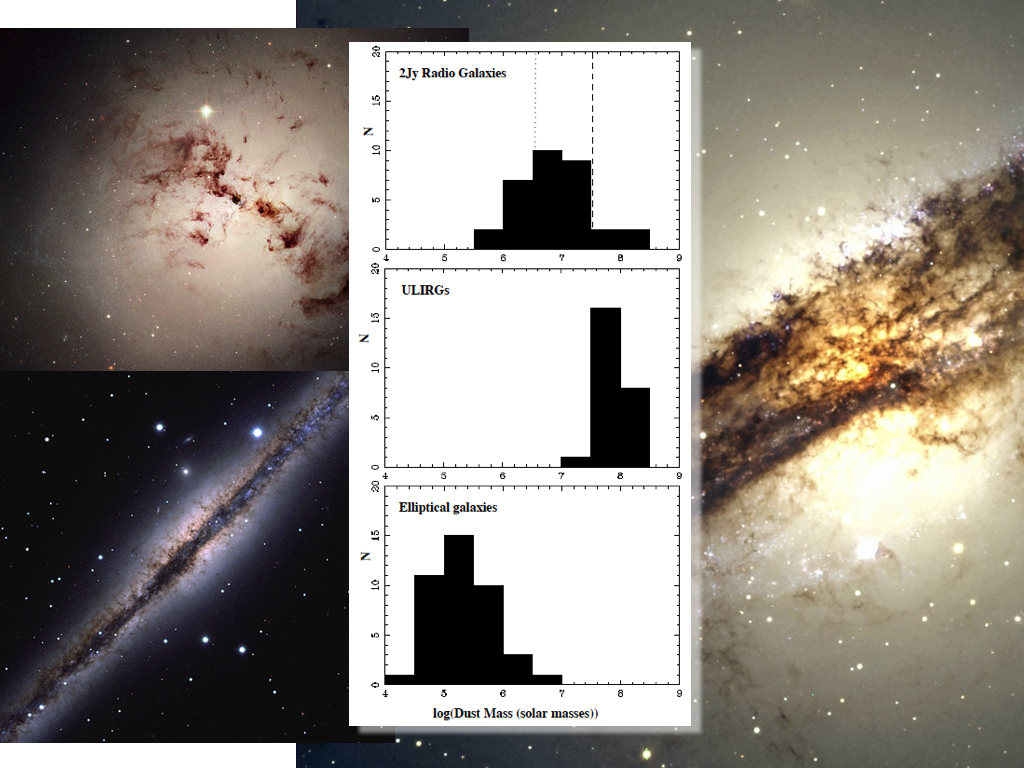Daily Image
26-08-2014Dust as Food for Galaxies
| Submitter: | Raffaella Morganti |
| Description: | Galaxies can be dusty. And dust appears in galaxies (like it does in daily life) as dark patches. In the case of galaxies, it is blocking the light of the stars. Some examples are shown in the image. However, dust is also consider to represent a good tracer of fuel that can "switch on" a black hole and produce an "active" galactic nucleus (AGN). To investigate and confirm this, we have we have used deep observations of radio galaxies from the Herschel Space Observatory to estimate the dust masses of their host galaxies, compare this with non-active galaxies and thereby investigate the triggering mechanisms for their quasar-like AGN. The dust masses derived for the radio galaxies (7.2*10^5 < Mdust < 2.6*10^8 M0) are intermediate between those of quiescent elliptical galaxies on the one hand, and ultra luminous infrared galaxies (ULIRGs) on the other. Consistent with simple models for the co-evolution of supermassive black holes and their host galaxies, these results suggest that most radio galaxies represent the late stage retriggering of AGN activity via mergers between the host giant elliptical galaxies and companion galaxies with relatively low gas masses. However, a minority of the radio galaxies in our sample (~20%) have high, ULIRG-like dust masses, along with evidence for prodigious star formation activity. The latter objects are more likely to have been triggered in major, gas-rich mergers that represent a rapid growth phase for both their host galaxies and their supermassive black holes. These results have been presented in a paper accepted for publication in the Monthly Notices of the Royal Astronomical Society "The dust masses of powerful radio galaxies: clues to the triggering of their activity" by C. Tadhunter, D. Dicken, R. Morganti, V. Konyves, N. Ysard, N. Nesvadba, C. Ramos Almeida (a copy of the paper can be found at http://arxiv.org/abs/1408.3637). A collection of information for the radio galaxies studied can be found at http://2jy.extragalactic.info/2Jy_home_page.html |
| Copyright: | NOAO, HST, ASTRON |
| Tweet |  |
